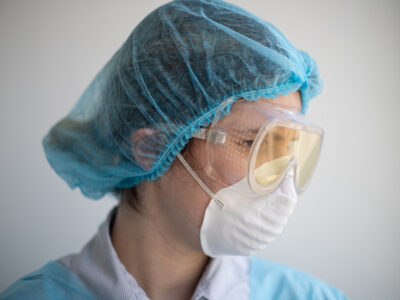Clinical laboratories are instrumental cogs in the massively complex chain of today’s healthcare system. The proper use of clinical laboratory services can bolster the ability of physicians and clinicians to make evidence-based decisions to help their patients minimize expenses and maximize outcomes. Simply put, clinical laboratory services are the least invasive and most effective source of objective health information in
- Preventing and diagnosing diseases,
- Bolstering patient outcomes,
- Ensuring patient safety, and
- Delivering vital public health surveillance functions.
Considering the importance of the clinical laboratory, it’s imperative for laboratory directors to continually improve the working environment and results. Fortunately, Vipin Adhlakha, President and Founder of Aria Diagnostics, offers valuable insights and best practices clinicians can use to improve operations and outcomes. Let’s explore four tangible ways you can improve the effectiveness and efficiency of your laboratory.
Consider Laboratory Automation Whenever Possible
Laboratory automation is no longer a buzzword. It represents endless possibilities and increased efficiencies for any clinical lab. Although most of the discussion around laboratory automation has been about the potential cost-saving and labor-cutting results, it’s just the beginning. Laboratory automation can also open the door to a range of benefits, including:
- Reduce the need for repetitive functions, so your staff can perform more engaging work.
- Increases lab efficiency
- Enables more consistent and reproducible results
- Improves lab safety by mitigating the likelihood of repetitive strain injuries,
As with most technological solutions, the difficult part is getting started. Some of the most common types of lab automation instrumentation include:
- Cell imaging
- Titrators
- Incubators
- Liquid handling
- Autosamplers
- And more
Vipin Adhlakha explains, “While investing in automation can represent an outlay of cash, this technology can lead to a significant ROI. I think most people should consider automation at a 10% premium because of the reduced mistakes.”
Continuously Evolve Quality Control Measures
Laboratory quality control (QC) includes all the systems and measures you have to mitigate the risk of nonconforming outcomes. While Vipin Adhlakha acknowledges the widely-accepted practice of performing QC every day of patient testing, he suggests clinicians take a proactive approach to improve and enhance QC practices, especially those seemingly time-tested practices. He explains, “Most labs are very effective at periodically reviewing quality control measures. However, many labs do not take the same QC rigor for well-established practices.” This may be because changing a process can lead to additional updates to documentation and follow-up tasks. If you change a practical process, you may need to update your standard operating procedures (SOP) and even retrain staff.
Regular Equipment Maintenance
Regular maintenance of laboratory equipment is necessary to ensure its proper functioning and reduce the risk of equipment failure or malfunction. Because precise instrumentation is key to valid results, you should have certain services performed regularly:
- Scheduled equipment maintenance,
- Equipment preventive maintenance, and
- Recalibration of equipment should be performed regularly.
One of the easiest ways to maintain your lab equipment is to clean it daily. Surprisingly, many laboratories overlook this simple but critical task. Adhlakha continues, “At best, you should wipe down the exterior of all equipment every day. In addition, you should perform a more rigorous, detailed cleaning at least once every week. Pay special attention to the manufacturer’s suggestions and protocols for cleaning equipment. If you have questions about best practices, don’t hesitate to contact the equipment rep or the manufacturer. “
Save Money by Refurbishing Lab Equipment
Whether you’re looking to generate cost savings or restore a piece of equipment that isn’t as effective as it once was, refurbishing equipment can provide the efficiency and solutions you need. The process involves dismantling the entire piece of equipment, cleaning individual components, inspecting those components for wear, and replacing any parts as needed. After the inspection, parts replacement, and cleaning are complete, and the parts are relubricated and reassembled. Refurbishing equipment is a cost-effective way to restore older equipment to like-new status.

















